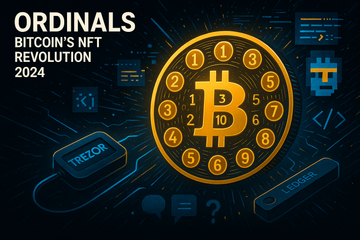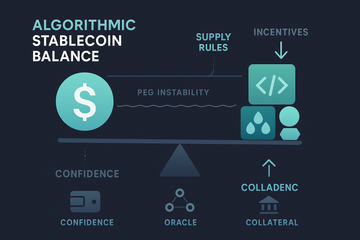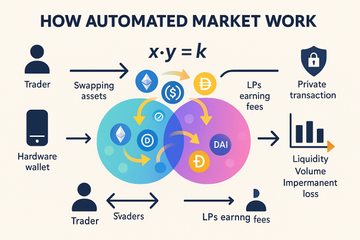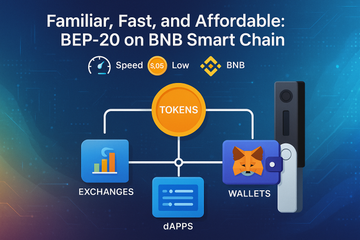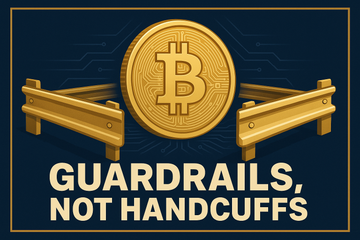If you thought Bitcoin was just for hodlers and cypherpunks, hang on to your hardware wallets. There's a new player on the digital collectibles field—Ordinals. For seasoned crypto fans and newcomers alike, this topic carries a raw can of intrigue, a dash of controversy, and yes, even a sprinkle of nostalgia for the early days of blockchain experiments. So, what exactly are Ordinals, and why is everyone from your Twitter feed to your Telegram group buzzing about them?
What Are Ordinals, and Why Should You Care?
Ordinals are NFT-esque digital artifacts that find their home on the Bitcoin blockchain. While the term sounds mathematical (and it sort of is), in crypto-speak, Ordinals refer to a protocol assigning a unique number to every satoshi—the smallest divisible unit of a bitcoin. What’s wild here? Each of these little sats, thanks to ordinal theory, can now carry data like images, text, or code. Attach something memorable, and suddenly, you’ve minted an NFT on Bitcoin. Seriously, who saw that coming?
Unlike Ethereum NFTs, which famously rely on smart contracts and decentralized storage interplay, Ordinals live right on Bitcoin’s mainnet, knitted into its fabric block by block. Curious why this is rattling cages? For years, Bitcoin’s purists viewed the chain strictly as a ledger for financial transactions, not a canvas for digital art. With Ordinals, that narrative is, well, evolving.
Roots and Rhythms: Who Dreamed This Up?
The brainchild of Casey Rodarmor, Ordinals made their mainnet debut in January 2023. Pretty recent, right? Their timing couldn’t be more perfect. NFT fever had swept through Ethereum and Solana, but Bitcoin, with its bulletproof reputation and global name recognition, was mostly sitting out the digital art party. Rodarmor’s protocol unlocked a secret: if you could number every satoshi, you could also assign media to it. Simple in thought, revolutionary in practice. Seizing on this, the new wave of Bitcoin NFTs caught on fast, spawning marketplaces, meme wars, and, of course, heated debates on Twitter and Reddit.
Ordinals vs. Old-School Bitcoin NFTs: What’s Actually Different?
Okay, time for a quick pit stop—how different are Ordinals from those early attempts at doing NFTs on Bitcoin?
- Layered Approach: Old Bitcoin NFTs typically used sidechains or layer-2 solutions (looking at you, Stacks). Ordinals are pure Bitcoin, sitting loud and proud on the main chain.
- Simplicity: No smart contracts needed. Ordinals just tag a specific satoshi and embed data directly. (No more detours or technical gymnastics.)
- Compatibility: With Ordinals, no protocol changes or forked clients are needed. They work with the Bitcoin you know and—let’s admit—don’t always love to transact with, thanks to high fees.
If this sounds more elegant and direct than some earlier Bitcoin NFT attempts, that’s because it really is. But it’s not without hiccups.
But Is It Really a Good Thing? Risks and Rewards
Here’s where the plot thickens. For some, Ordinals have breathed new life into Bitcoin. Artists, meme-makers, musicians, and, ahem, a few not-so-savory types, have all minted unique digital artifacts. People are trading Ordinals on growing marketplaces like Magic Eden, paying premiums for rare inscriptions—a satirical nod to the old days when anything with a blockchain sticker seemed ready to moon overnight.
But let’s not sugarcoat: not all is rosy in Satoshi’s digital garden. Critics argue that Ordinals gobble up precious block space, pushing fees higher and squeezing out 'regular' transactions. It’s as if your favorite coffee shop suddenly started hosting a rave—the regulars can barely get to the counter anymore. Plenty of Bitcoiners see this as a distraction, even a threat to Bitcoin’s core mission.
Let’s Talk Hardware: Trezor, Ledger, and the Bitcoin NFT Experience
Before you FOMO into your first ordinal, let’s talk wallets. Storing ordinals requires a wallet that can 'see' and transfer individual satoshis. Unlike fungible BTC, these are tracked at a granular level. Some advanced users tinker with Bitcoin Core, while others turn to specialized wallets or tools.
Notably, popular hardware wallets like Trezor and Ledger give users the confidence to safeguard their NFT-like creations. These companies, keen to stay current, regularly update firmware and software, aiming for compatibility with evolving Ordinals protocols. It’s a signal that this isn’t just a passing craze. The hardware wallet titans are hungry for the NFT crowd, too.
What’s Happening Right Now? The Scene in 2024
Ordinals have become more than a technical curiosity—they’re fueling genuine ecosystem growth. Marketplaces like Magic Eden and Ordinals.com host buying, selling, and discovery. Major collections pop up, from meme-laden art to music and poetry. Community debates don’t show any signs of cooling, either. Some love the developer energy pulsing through the Bitcoin universe. Others grumble about spam and network bloat.
Seasoned collectors compare the rush to early Ethereum NFT days—a gold rush feel, with speculation, misses, and the occasional headline-grabbing win. It’s all a bit unpredictable, honestly; but that unpredictability is also part of the fun.
The Community Pulse: Arguments at the Watercooler
Spend five minutes in a Bitcoin-Ordinals Discord, and you’ll find every opinion under the sun. Some see Ordinals as a democratizing force for art and data, finally giving creators a home on the world’s most secure blockchain. Others contest that it’s a tangent, muddying what ought to be a pure, payment-focused system.
One thing’s certain: Bitcoin’s devs, miners, fans, and foes are all paying attention. The broader crypto world, well, they’re watching too, perhaps with a blend of envy and skepticism. Where it all lands remains anyone’s guess.
Final Thoughts: Where Next?
So, are Ordinals the next big frontier or a footnote in Bitcoin’s sprawling saga? It depends who you ask. Maybe both. For now, they’ve nudged Bitcoin into new cultural and collectible territory. If you’re a hardware wallet devotee, an NFT lover, or just someone keeping tabs on crypto’s knottier debates, the Ordinals wave is worth checking out—even if only to argue about it in your next Telegram thread.
And if you’re feeling nostalgic for that sense of wild possibility from crypto’s early days, well, you’ll find it here. Just wrapped in a brand-new packet, signed and sealed on a satoshi, singing a different kind of blockchain song.





